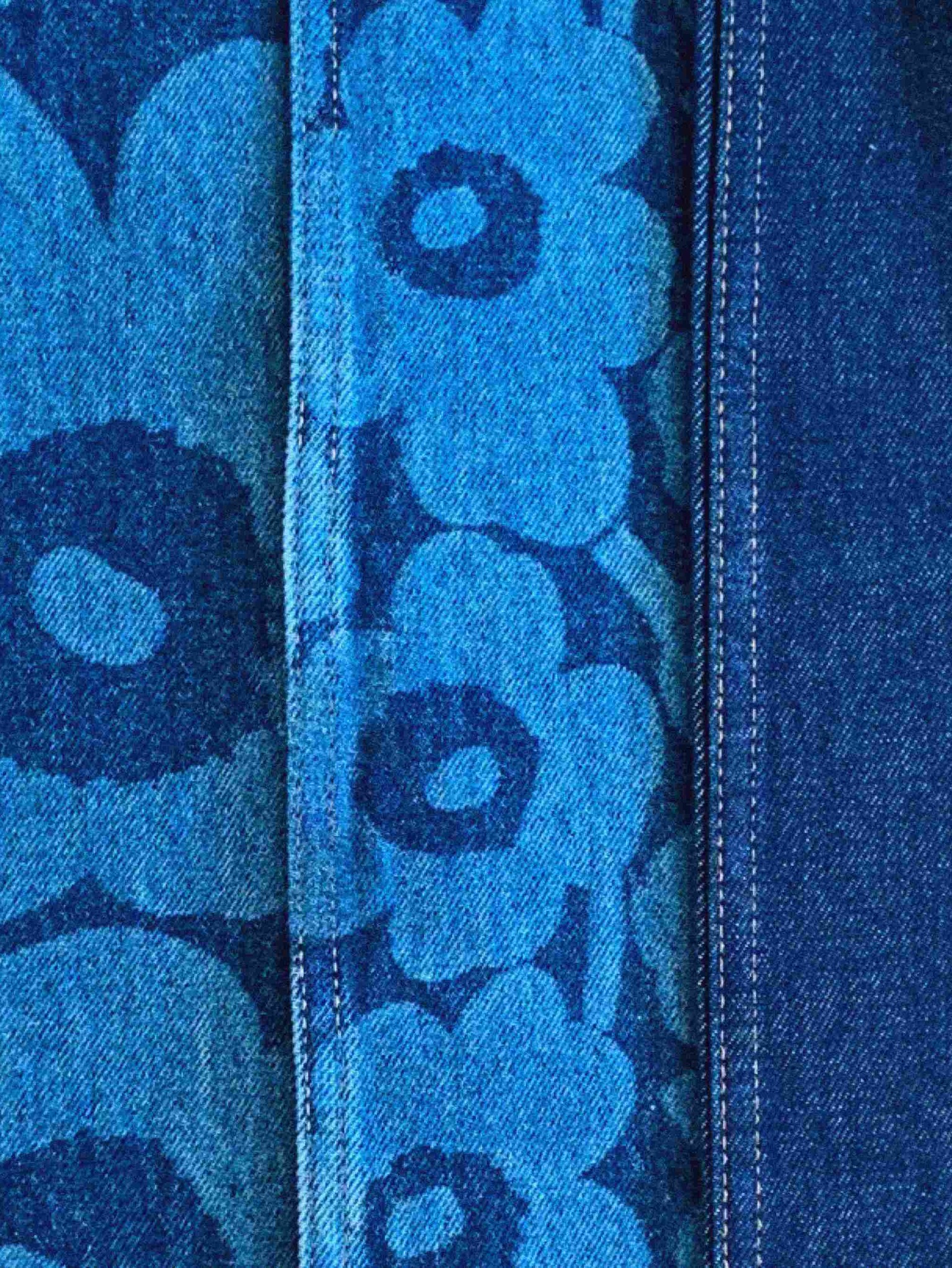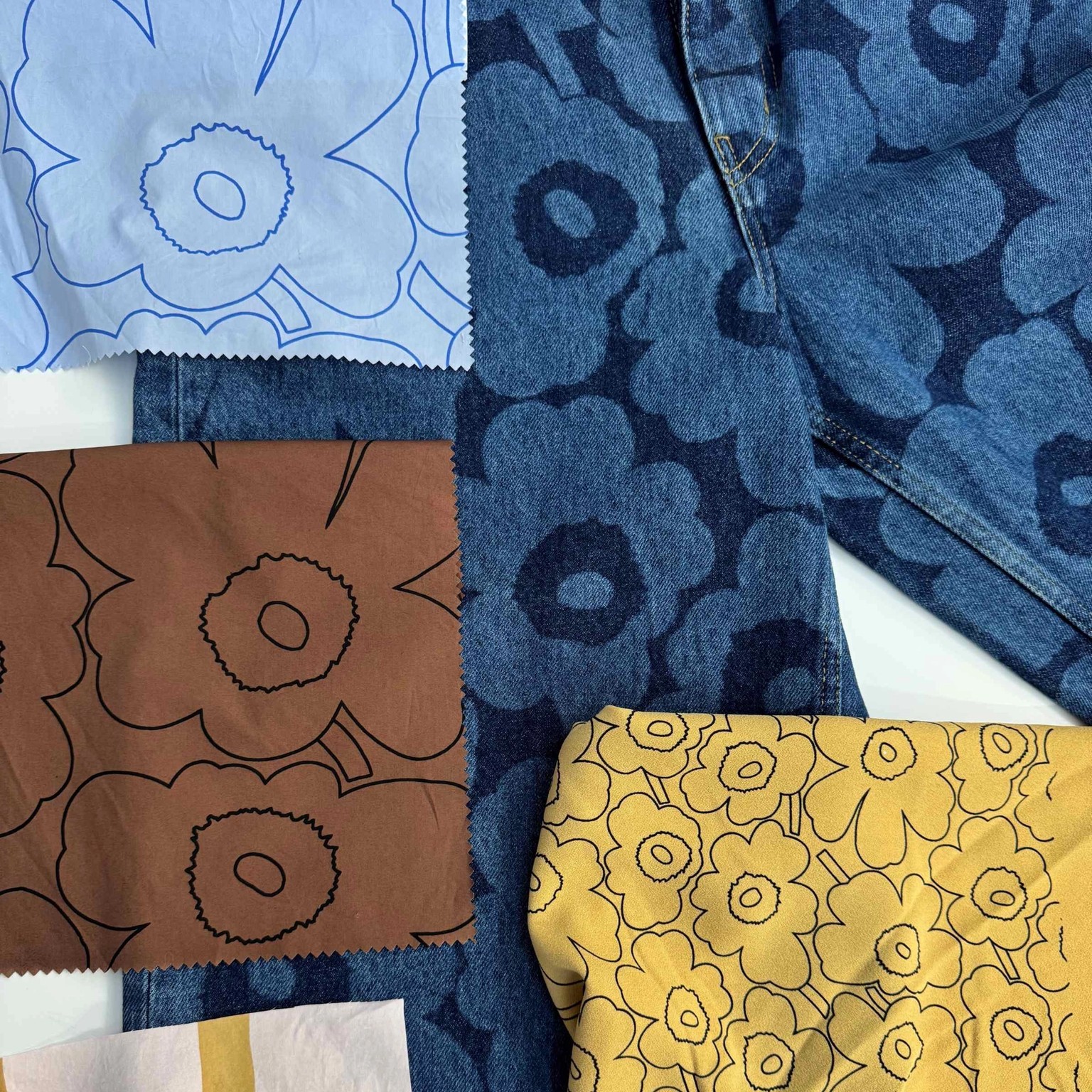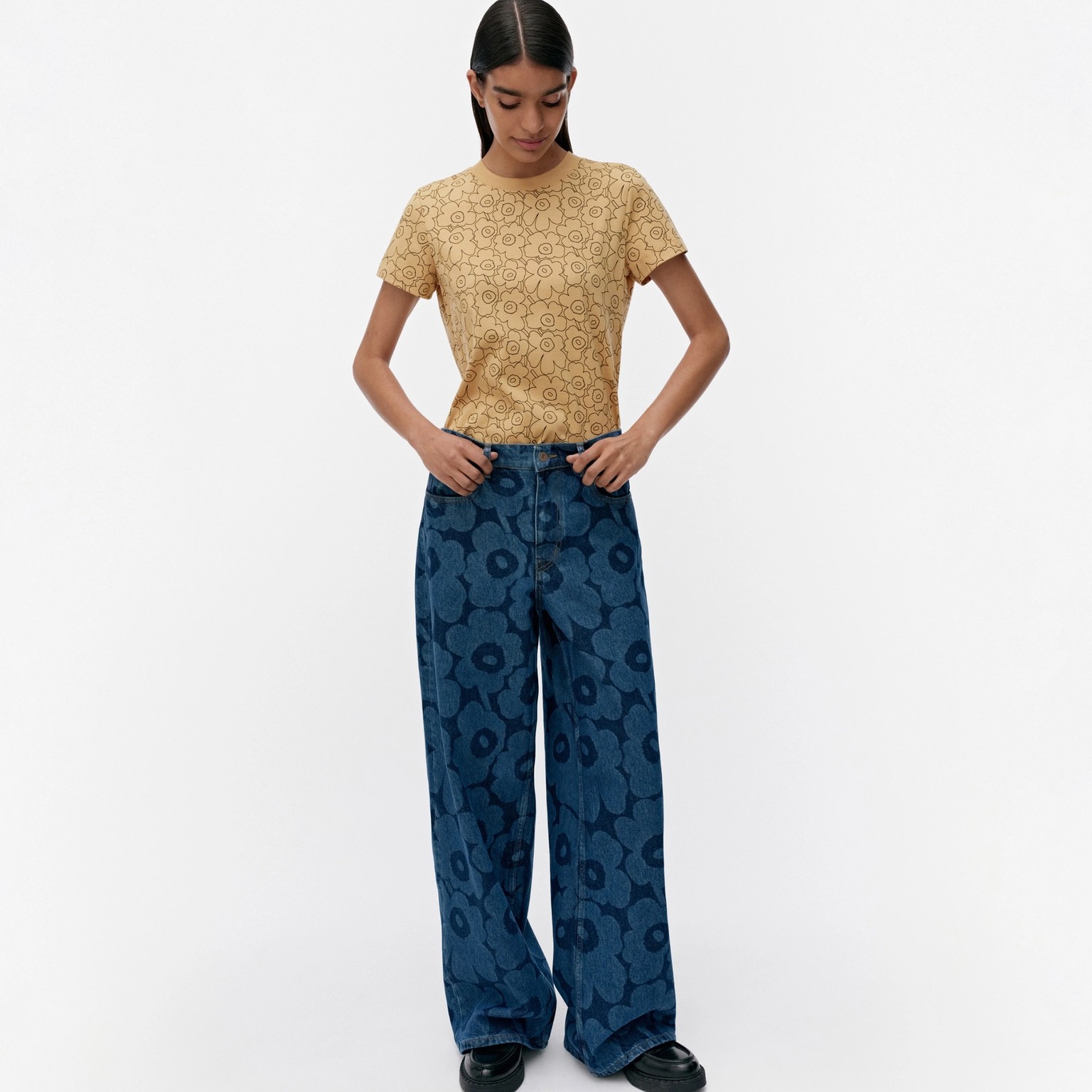Threads of circularity: the making of Marimekko Maridenim

A year ago, we at Marimekko embarked on a new challenge: creating a new product category that would serve as the latest canvas for our art of printmaking. This expansion marked uncharted territory for us, as denim's unique texture and finish stood apart from the other materials in our collections. Yet, from the start, it felt like a perfect fit—a versatile wardrobe hero, equally at home with bold prints, cozy knits or a polished pair of heels.
At Marimekko, every new venture begins with a thorough examination of the entire process—from raw materials and fabrics to design, production, care, and the garment’s life beyond its wearer, including recyclability. “To guide us in this work, we decided from the get-go to follow the Ellen MacArthur Foundation’s Jeans Redesign Guidelines,” says Helle Bengtsen, an experienced denim designer.
Sustainability Communications Manager Tytti Kotipelto joins the conversation and asks Helle to explain the Jeans Redesign Guidelines and their background.
“The Guidelines have been developed by the industry, academia and NGOs, setting a standard for designing and making garments in line with circularity. They cover criteria such as durability, traceability, recyclability, and the use of safe materials and processes. The intention is to transform the way jeans are designed and made so that they are used more, made to be made again, and crafted from safe and recycled or renewable inputs. In practice, the Guidelines provide information on material and manufacturing options that are aligned with circularity.”
For those unfamiliar with the concept of circularity, Tytti offers a definition: “It’s a system that optimizes resource use and minimizes waste throughout the production and consumption cycle. Products and materials are kept in circulation through processes like maintenance, reuse, remanufacturing and recycling.”
Built to last: Denim for generations
The Jeans Redesign Guidelines focus on three themes, the first being "Jeans are used more—designed and manufactured to last," which addresses both physical and emotional durability.
“In Maridenim, the product is designed to withstand wear, and its style remains relevant and desirable, encouraging the user to return to it time after time,” Helle explains.
Tytti adds: “Emotional durability has always been central to Marimekko. Our aim is to create timeless designs that bring joy for generations. This matters because, according to the Ellen MacArthur Foundation, doubling the lifespan of clothing could reduce the industry’s emissions by up to 44 percent.”
As a mark of durability, the Guidelines require jeans to endure at least 30 home washes while maintaining their 'as-new' appearance. They also emphasize educating users on proper care. For Maridenim, care instructions are printed inside the front pocket, detailing washing frequency and temperature. “We aim to create long-lasting items, but their longevity also depends on the user—how often the jeans are washed and how they’re used, whether in the office or for physical work. Washing wears down fabrics and colors, so we recommend washing sparingly and, when possible, airing them instead,” Helle explains.
Circularity starts with the right materials
The second theme of the Jeans Redesign Guidelines focuses on "Jeans are made to be made again," placing circularity at the heart of design.
“The way clothes are made, including the way fabric is constructed and chosen, considers recyclability. For circularity, mono-materials are preferred over blends to align with current recycling technologies. For Maridenim, we opted for 100% cotton: either fully organic or a blend of 80% organic and 20% recycled cotton,” says Helle.
To enable recyclability and reuse, buttons and rivets must be removable. “In Maridenim, we use removable buttons and have replaced rivets with bartacks for reinforcement where needed,” she adds.
The third theme, "Jeans are made from safe and recycled or renewable inputs," emphasizes using organic fibers—or even regenerative options—and eliminating harmful chemicals to ensure materials can circulate safely while reducing environmental pollution and health risks, as with any Marimekko product.
The Guidelines prohibit certain chemicals and processes commonly used in conventional denim production, such as conventional electroplating, stone finishing and sandblasting, due to their environmental and health hazards and their impact on garment durability. According to Helle, Marimekko Maridenim features AcroPlated buttons and zippers, while advanced technologies—including lasers and ozone and E-Flow washing—are used to achieve the desired look and feel of each piece without resorting to harmful practices.
In the manufacturing and laundry process, where Marimekko Maridenims are finished to achieve the desired color and feel – in denim terms “the wash”– the supplier’s factory uses the latest technology, as a combination of laser, e-Flow steam washing and ozone washing. For example, the Unikko print is achieved with laser which removes color from the fabric.
From field to fabric
The goal for Marimekko Maridenim was to craft a versatile, timeless assortment that not only stands the test of time but also offers transparency in its journey from raw materials to finished pieces. “As with many other Marimekko products, we know our supply chain in Maridenim down to the raw material level. Achieving this level of transparency is no small feat in the textile industry, where supply chains are long,” explains Marimekko Maridenim Product Developer Lotta Becker-Westin.
“After thorough research, we selected a dedicated team of partners in Türkiye, all of whom participate in the Jeans Redesign program. The organic cotton used in the denim fabric is also grown in Türkiye, following the Organic Content Standard (OCS). Additionally, the cotton is ginned, spun, dyed and woven into Maridenim fabric locally,” Lotta shares.
“What’s more, our partner suppliers have been audited by a third party to ensure compliance with social responsibility standards,” adds Tytti.
Finding experienced suppliers was critical to achieving the high quality Maridenim demands, Lotta emphasizes. “In addition to expertise in denim, we prioritized partners committed to innovations that improve environmental performance. This includes managing water, electricity and chemical use, as well as their waste.”
Reflecting on Marimekko’s commitment to sustainability, Tytti concludes: “Maridenim is a perfect example of realizing our sustainability strategy where timeless design, material and process decisions pave the way also to better choices in social responsibility – that also support circularity. And what’s even greater, we are going beyond jeans! We have created a Framework for Circular Design to guide us in applying circular design principles to other Marimekko products, too.”





